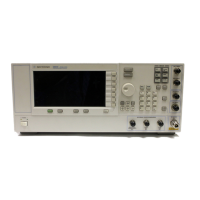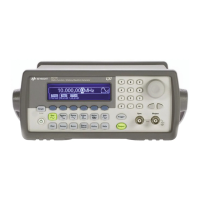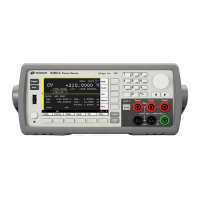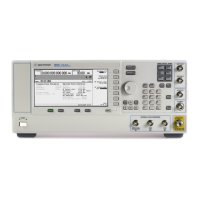Keysight EXG and MXG X-Series Signal Generators User’s Guide 237
Basic Digital Operation for N5172B/82B with Options 653/655/656/657
Multiple Baseband Generator Synchronization
If the trigger settings are other than what the BBG synchronization feature supports, the feature
changes the trigger settings to what is shown on page 234. When this change occurs, the Keysight
MXG/EXG generates a settings conflict error to alert you to the changes. To avoid the error
generation, appropriately configure the trigger settings prior to selecting a signal generator as the
master or slave.
The system trigger propagates in the same manner as the synchronization pulse initiated by the
master (see System Synchronization). So if it is not turned off during changes to the
synchronization parameters, it can cause a false In Sync status.
The signal generator does not reset the trigger parameters when the multiple BBG synchronization
feature is turned off. To play waveforms after disabling the feature, you must either set the trigger
type to Free Run or provide a trigger to start the waveform play back.
Equipment Setup
Figure 8-29 Multiple Baseband Synchronization Setup
Configuring the Setup
Set the Common Parameters
Perform the following steps on all signal generators:
1. Set the frequency of the carrier signal.
2. Set the power level of the carrier signal.
3. Select the desired waveform (see page 155).
Do not turn the Dual ARB on.
4. Except for triggering, set the desired waveform parameters such as markers and sample clock.
There can be 1 to 15
slaves in a setup.
If not using the Trigger key, provide an external trigger
source. For information on the PAT TRIG connector,
see page27.
PAT TRIG
PAT TRIG
PAT TRIG
10MHz Out
REF IN
10MHz Out
REF IN
REF IN
10MHz Out
EVENT 1
EVENT 1
EVENT 1
RF OUTPUT
RF OUTPUT
RF OUTPUT
RF OUTPUT
Note:
To minimize synchronization delay, the Keysight BNC cable 10502A is the
recommended cable for the rear panel daisy chain connections (see page236).
PAT TRIG
or GPIB

